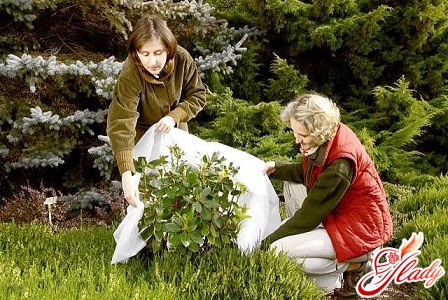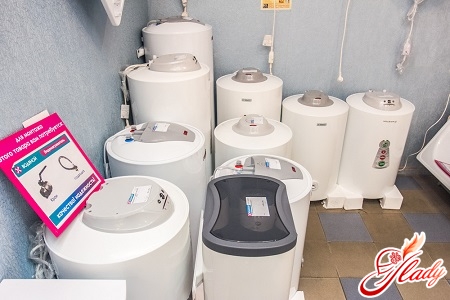 Another gardening season approachedthe end. It was November, the month of its final closing. Already almost all trees have thrown off foliage, singing birds have already departed, annoying flies and cheerful butterflies have disappeared (till the spring). And only tireless gardeners will not calm down. Autumn works in the garden require from them no less forces than in the spring or summer. And at the final stage - even more so. The main goal of the garden works in November is the preparation of the garden for the winter and the new season. How to fulfill this responsible mission, and what needs to be done for the successful wintering of your garden? The life cycle of garden plants and other inhabitants of the garden dictates our conditions. There is a period of rest for the garden, and our task is to prepare it safely for the winter. All that needs to be done can be conditionally divided into the preparation of the plants themselves, the cleaning of the garden and the work for which the period of rest of the garden crops is suitable. November's autumn works in the garden look like this: pruning and transplanting fruit trees and shrubs; pruning and reproduction of flowering perennials and shrubs; planting of spring bulbs; shelter and warming of wintering plants; collection of fallen leaves and autumn cleaning in the garden. Let's consider all these works in more detail.
Another gardening season approachedthe end. It was November, the month of its final closing. Already almost all trees have thrown off foliage, singing birds have already departed, annoying flies and cheerful butterflies have disappeared (till the spring). And only tireless gardeners will not calm down. Autumn works in the garden require from them no less forces than in the spring or summer. And at the final stage - even more so. The main goal of the garden works in November is the preparation of the garden for the winter and the new season. How to fulfill this responsible mission, and what needs to be done for the successful wintering of your garden? The life cycle of garden plants and other inhabitants of the garden dictates our conditions. There is a period of rest for the garden, and our task is to prepare it safely for the winter. All that needs to be done can be conditionally divided into the preparation of the plants themselves, the cleaning of the garden and the work for which the period of rest of the garden crops is suitable. November's autumn works in the garden look like this: pruning and transplanting fruit trees and shrubs; pruning and reproduction of flowering perennials and shrubs; planting of spring bulbs; shelter and warming of wintering plants; collection of fallen leaves and autumn cleaning in the garden. Let's consider all these works in more detail.
Pruning of fruit trees and berry bushes
Autumn pruning of these crops affects not only thefuture harvest, but also for a successful wintering. In the late autumn, sanitary trimming of trees and bushes is carried out. How to do it right? Sick and dry branches of fruit trees should be cut "on the ring" (remove completely through the outer ring at the base of the branch). Trim all the tops (vertical non-fructifying branches). The bushes need to remove excess root and shoots, dried branches. Clean and disinfect the sections (for example, with copper sulphate solution). Sections with a large area to cover with garden fumes. The spring grafts of fruit trees grow strongly over the summer. Therefore, in autumn it is necessary to replace the pegs to which the shoots are attached to higher ones. Become tight strapping material should also be replaced or weakened. Raspberries and blackberries need to cut out all the shoots that have produced this year. The remaining shoots can be loosened from the supports and pinned to the ground. Bushes of gooseberry and currant okuchit, and young berry tie (to protect against the weight of the snow cap).
Pruning and reproduction of flower crops
Perennial flowers also need to be prepared forwinter. The aerial part of grassy perennials must be cut off. Echinacea, phlox, rudbeckia, aconite cut to a height of 10-15 cm. Leave the remaining flowers "hemp" height of 2-3 cm Yarrow, cleansing, astilby and solidago can not be cut, postponing pruning in the spring. It is desirable to add fresh soil to flower beds and perennials. Before the first frosts, it is necessary to plant bulbs of muscari, crocuses, hyacinths, tulips and other spring primroses. But the bulbs and tubers of dahlias and gladioli, on the contrary, must be digged. Dahlias can be excavated after the first nocturnal frosts. Excavated tubers must be washed, cut out damaged areas (sprinkled with crushed coal), dried and put away for winter storage. Gladiolus bulbs cleaned, dried and placed in boxes. In winter, it is also possible to sow cold-resistant summer: lupine, calendula, fragrant tobacco, cosmece and rudbeckia. For sowing flowers with small seeds, dig (two-thirds) in a bed of containers with soil. In such containers shoots will not be lost on the background of lush spring greens. 
Shelter and warming of wintering plants
How to protect young seedlings and heat-loving plantsculture from winter frosts? Compact bushes and young seedlings can be completely covered with special covering material. Clematis and climbing roses remove from the supports, cut off the whip a little and, folding the ring, lay on the ground. Tea-hybrid roses in front of the shelter need to cut flowers and buds. Insulate the bushes need not before the negative temperature of 8-10 degrees will be stable. For complete sheltering of bushes, warming materials (for example, sawdust) should be poured with a mound, and on top lay a special coating or ordinary polyethylene, pressing the edges with stones or bricks. Especially valuable varieties should be covered with a wooden frame. For the warming of the roots of young plants, you can fall asleep with a root canal with compost, sawdust or dry peat. To protect against rodents, trunks can be wrapped with ruberoid, or wrapped in capron pantyhose. From the hungry winter hares (if they live in close proximity), the trees will protect the bundle with needle needles with needle needles down. For thaw, rhododendron and boxwood, frosts are not so terrible as the spring sun, which can burn plants. From frost and sunlight, they will be protected by a wrapper made of matting, burlap or other covering materials other than polyethylene (under them these plants can rot). That the snow has not spoiled the coniferous trees, tie their branches with twine, put under them skeletons or props.
Cleaning of the garden
Cleaning the garden is also an important part of itpre-winter preparation. Before you prepare the garden for the winter finally, you need to restore order in it. To begin with, put the order in the crowns of trees and bushes. After sanitary pruning, remove from the branches wintering nests of butterflies and dried fruit. Burn it all. In the same fire send the fallen leaves, stalks of cut annuals and other plant waste. Such a fire will help in the prevention of plant diseases and in the destruction of pests prepared for wintering. In the trunks of trees and berries, excavate the earth without crushing earth lumps. Thanks to this, the soil will freeze, and pests that winter in it will die. With the same purpose (pest control), lime trunks and skeletal branches of fruit trees. Using tree bark or dry leaves, cover up the soil under non-susceptible trees and shrubs. Clean lawn from dry leaves, dead grass and moss. Cut it. November - the most suitable time for the last haircut: before the onset of frost the grass will have time to grow to a sufficient height (6-8 cm). The taller grass can freeze and vyle. If in some places the lawn is "bald", then at this time you can pour seeds (they are no longer riddled with ants, and in the spring before the first haircut the seeds will have time to germinate). If there is a pond in your garden, it must also be prepared for winter. From small artificial ponds, most of the water is best drained. To reduce the pressure of ice on the walls of pond tanks, it is worth putting in the bottom of logs or incomplete plastic bottles with water. For deeper ponds (especially if they are inhabited by plants and fish), more thorough preparation is required. Even before freezing, clean the pond from fallen leaves. Heat-loving pond plants in baskets or pots (arrowhead, pontederia) move to where the water probably will not freeze. If the depth of your pond is not less than 80 cm, then the fish in it can safely winter. You will only have to make sure that the surface of the water is not completely covered by ice. For convenience, you can purchase special systems that do not allow the appearance of an ice crust. So do not waste time and hurry to finish all the necessary preparations before the onset of frost. Because of how to prepare the garden for the winter, depends on his health, beauty and fertility. So - the success of the next season! We advise you to read:









